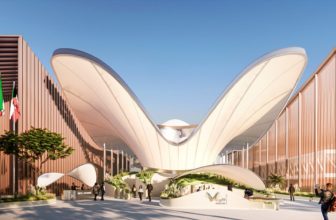The Jury for the Award –convened by the Prince of Asturias Foundation– was chaired by José Lladó y Fernández-Urrutia and made up of Bárbara Allende Gil de Biedma, José Luis Cienfuegos Marcello, Carlos Fitz-James Stuart Martínez de Irujo, Duke of Huéscar, Guillermo García-Alcalde Fernández, Carmen Giménez Martín, Enrique González Macho, Catalina Luca de Tena y García-Conde, Hans Meinke Paege, Elena Ochoa Foster, Benedetta Tagliabue, Patricia Urquiola Hidalgo, Carlos Urroz Arincibia, Miguel Zugaza Miranda and José Antonio Caicoya Cores (acting as secretary).
This candidature was put forward by Richard Armstrong, Director of the Solomon R. Guggenheim Foundation in New York.
Frank Owen Gehry was born in 1929 in Toronto (Canada), but adopted American nationality after moving to Los Angeles in 1947 with his parents. He graduated in Architecture in 1954 from the University of Baja California and began working in the studio of Victor Gruen. After completing his military service, he studied Urban Planning at Harvard and returned to Gruen’s office. He moved to Paris in 1961 with his wife and two daughters, where he worked for a year with André Rémondet. In 1962, he opened his own studio –Frank O. Gehry and Associates– in Los Angeles, from which he has worked on projects in America, Europe and Asia for five decades now.
He rose to prominence in the 70s for his buildings with sculptural forms that combine unusual industrial materials such as titanium and glass. During this same period, he began to develop a role as a designer of furniture with his Easy Edges collection, conceived as a low-cost range comprising fourteen pieces made out of cardboard, subsequently followed by the more artistic range, Experimental Edges. Since the late 80s, the name of Frank Gehry has been associated with the deconstructionist movement, characterized by fragmentation and the rupture of a linear design process, resulting in buildings with a striking visual appearance. The Guggenheim Museum in Bilbao (1997) and the Nationale-Nederlanden building in Prague (1996), known as the Dancing House, may be considered among the most prominent examples of this formal language. Likewise noteworthy among his works are the Aerospace Museum of California (1984), the Vitra Design Museum in Weil am Rhein, Germany (1989), the Frederick Weisman Art Museum in Minneapolis (1993), the DZ Bank building in Berlin (1998), the Gehry Tower in Hannover (2001), the Massachusetts Institute of Technology Stata Center in Cambridge (2003), the Walt Disney Concert Hall (2003) and the Maggie’s Centre in Dundee, Scotland (2003). Gehry has also worked on a museum of contemporary art in Paris for the Louis Vuitton Foundation, the design of his first playground in New York, at the southern tip of the island of Manhattan known as The Battery, and the remodelling and recovery of Mayer Park in Lisbon, which included the restoration of the Capitolio Theatre. In Spain, 2006 saw the opening of the Herederos del Marqués de Riscal winery in Elciego (Álava), and he has also designed the Sagrera Tower in Barcelona.Read more.





